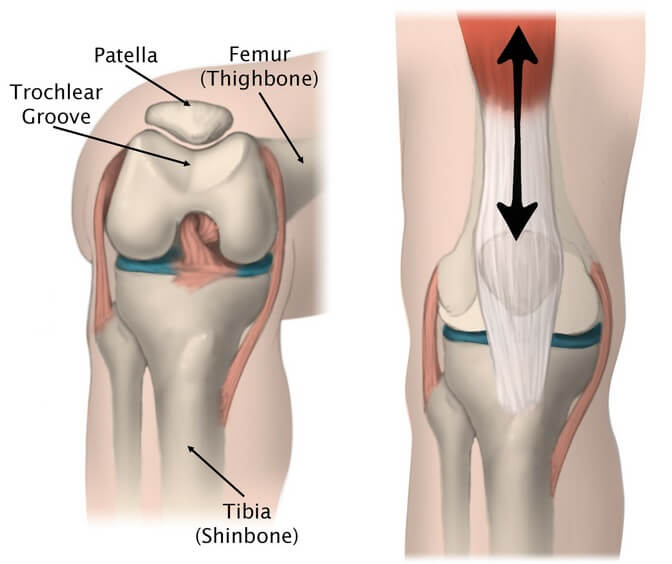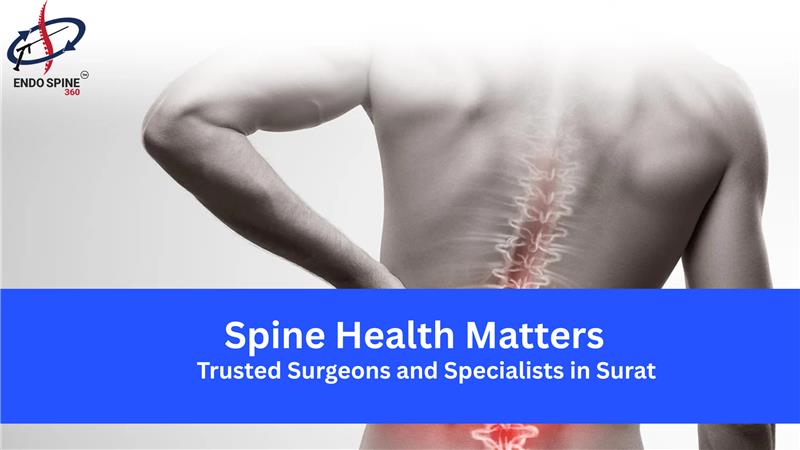Understanding Knee Pain: Symptoms, Causes and Effective Solutions
- Admin
Knee pain is a widespread issue that transcends age and lifestyle, affecting people from various walks of life. Whether you are a dedicated athlete, an office worker, or a retiree, knee pain can significantly disrupt your daily routine and quality of life.
Many types of minor knee pain respond well to self-care measures. Physical therapy and knee braces also can help relieve pain. In some cases, however, your knee may require surgical repair.
Signs and Symptoms of Knee Pain
Knee pain can be characterized by several symptoms, which may include:
-
Swelling and Stiffness:
Often, individuals with knee pain experience swelling in the affected knee joint. Stiffness in the knee, making it challenging to move or bend, is also a common symptom. -
Redness and Warmth to the Touch:
In some cases, the knee may appear red and feel warm when touched. This can indicate inflammation. -
Weakness or Instability:
Knee pain can lead to muscle weakness around the knee joint. This weakness may result in a feeling of instability, making it difficult to bear weight on the knee. -
Popping or Crunching Noises:
Audible noises, such as popping or crunching, can be heard when moving the affected knee. These noises can be disconcerting and may be a sign of underlying issues. -
Inability to Fully Straighten the Knee:
Some individuals with knee pain find it impossible to fully straighten their knee joint. This limited range of motion can be a significant source of discomfort and inconvenience.
When to see a doctor
Inability to Bear Weight or Knee Instability:
If you find it impossible to bear weight on your knee or feel that your knee is unstable and prone to giving out, this warrants immediate medical attention. It may indicate a significant injury or ligament damage.
Marked Knee Swelling:
When your knee experiences severe swelling, it's a sign that something is amiss. Excessive swelling can be indicative of underlying issues, such as injury or inflammation, and should be assessed by a healthcare professional.
Limited Range of Motion:
If you are unable to fully extend or flex your knee joint, it suggests a restriction in mobility that needs to be addressed. This limitation can be due to various causes, and a doctor can help determine the underlying problem.
Obvious Leg or Knee Deformity:
The presence of an apparent deformity in your leg or knee should be a red flag. It could signify a fracture or dislocation, and immediate medical evaluation is vital.
Fever with Redness, Pain, and Swelling:
If you experience a fever in addition to redness, pain, and swelling in your knee, it may indicate an infection. Infections in the knee joint can be serious and require prompt medical attention.
Severe Knee Pain Due to an Injury:
If you have severe knee pain resulting from an injury, such as a fall, sports-related incident, or accident, it's essential to consult a doctor. Injuries may involve ligament tears, fractures, or other structural damage that needs professional assessment and treatment.
Causes of Knee pain
Knee pain can be caused by injuries, mechanical problems, types of arthritis and other problems.
Injuries
ACL injury: An ACL injury is a tear of the anterior cruciate ligament (ACL) — one of four ligaments that connect your shinbone to your thighbone. An ACL injury is particularly common in people who play basketball, soccer or other sports that require sudden changes in direction.

Fractures:
The bones of the knee, including the kneecap (patella), can be broken during falls or auto accidents. Also, people whose bones have been weakened by osteoporosis can sometimes sustain a knee fracture simply by stepping wrong.
Torn meniscus:
The meniscus is the tough, rubbery cartilage that acts as a shock absorber between your shinbone and thighbone. It can be torn if you suddenly twist your knee while bearing weight on it.
Knee bursitis:
Some knee injuries cause inflammation in the bursae, the small sacs of fluid that cushion the outside of your knee joint so that tendons and ligaments glide smoothly over the joint.
Patellar tendinitis:
Tendinitis causes irritation and inflammation of one or more tendons — the thick, fibrous tissues that attach muscles to bones. This inflammation can happen when there's an injury to the patellar tendon, which runs from the kneecap (patella) to the shinbone and allows you to kick, run and jump. Runners, skiers, cyclists, and those involved in jumping sports and activities may develop patellar tendinitis.
Mechanical Issues That Cause Knee Pain
-
Loose Body:
Sometimes, due to injury or degeneration, a fragment of bone or cartilage can break off and float within the joint space. This "loose body" may not pose problems initially, but if it interferes with knee joint movement, it can lead to pain and discomfort. -
Iliotibial Band Syndrome:
Iliotibial band syndrome occurs when the tough band of tissue running from the outside of the hip to the outside of the knee (iliotibial band) becomes excessively tight. This tightness can cause it to rub against the outer portion of the thigh bone, leading to discomfort and pain. Distance runners and cyclists are particularly susceptible to this syndrome. -
Dislocated Kneecap:
A dislocated kneecap, medically known as patellar dislocation, transpires when the triangular bone covering the front of the knee (patella) slips out of its normal position, often shifting to the outside of the knee. In some cases, the kneecap remains dislocated and visibly out of place. -
Hip or Foot Pain:
Hip or foot pain can alter your natural gait as you attempt to spare your painful joint from bearing weight. This change in walking pattern can place increased stress on the knee joint, eventually leading to knee pain.Understanding the mechanical issues behind knee pain is the first step toward effective management. If you suspect any of these issues may be contributing to your knee pain, consult a healthcare professional. They can perform a thorough evaluation and recommend appropriate treatment options, which may include physical therapy, targeted exercises, bracing, or in some cases, surgical intervention.
Types of Arthritis Affecting the Knee
- Osteoarthritis:
- Osteoarthritis, often referred to as degenerative arthritis, stands as the most prevalent form of arthritis.
- It is a wear-and-tear condition in which the cartilage in the knee gradually deteriorates over time and with use.
- Osteoarthritis typically occurs with age and is characterized by pain, stiffness, and reduced joint mobility.
- Rheumatoid Arthritis:
- Rheumatoid arthritis is an autoimmune condition that can affect various joints, including the knees.
- Rheumatoid arthritis tends to vary in severity and may have periods of remission and exacerbation.
- It is one of the more debilitating forms of arthritis, characterized by chronic inflammation and joint damage.
- Gout:
- Gout is a type of arthritis triggered by the accumulation of uric acid crystals in the joints.
- While it most commonly affects the big toe, it can also manifest in the knee joint, leading to intense pain and inflammation.
- Pseudogout:
- Pseudogout is often mistaken for gout but is caused by calcium-containing crystals forming in the joint fluid.
- Among affected joints, knees are the most commonly impacted, resulting in pain and discomfort.
- Septic Arthritis:
- Septic arthritis occurs when the knee joint becomes infected, leading to symptoms like swelling, pain, and redness.
- It often presents with a fever, and there is usually no preceding trauma.
- Septic arthritis demands urgent medical attention as it can quickly cause significant damage to knee cartilage.
Seeking Diagnosis and Treatment
If you suspect that you have any form of arthritis or are experiencing knee pain and discomfort, it is essential to consult a healthcare provider. An accurate diagnosis is the first step toward managing and treating arthritis effectively. Various treatment options, including medication, physical therapy, lifestyle modifications, and in some cases, surgery, can help alleviate symptoms and improve the quality of life for individuals with arthritis.
Beyond Arthritis: Patellofemoral Pain Syndrome
Patellofemoral Pain Syndrome (PFPS) is a broad term encompassing pain that arises between the kneecap (patella) and the underlying thighbone (femur). It is characterized by discomfort and can have several underlying causes, leading to varying symptoms.

Risk Factors Contributing to Knee Problems
-
Excess Weight:
Carrying excess weight places increased stress on your knee joints, even during everyday activities like walking or climbing stairs. It accelerates the breakdown of joint cartilage, raising the risk of developing osteoarthritis. -
Lack of Muscle Flexibility or Strength:
A lack of strength and flexibility can heighten the risk of knee injuries. Strong muscles play a crucial role in stabilizing and protecting the knee joints, while flexibility is essential for achieving a full range of motion. -
Certain Sports or Occupations:
Some sports activities, such as alpine skiing with rigid ski boots, basketball with its jumps and pivots, and running or jogging with repeated impact on the knees, increase the risk of knee injury.Occupations with repetitive knee stress: Jobs like construction or farming that involve repetitive stress on the knees can also elevate the risk of knee problems.
-
Previous Injury:
If you've had a previous knee injury, it makes you more susceptible to injuring the knee again. Past injuries can weaken the knee joint and its structures, increasing vulnerability.
Complications
While not all instances of knee pain are cause for immediate concern, it's essential to recognize that certain knee injuries and medical conditions can lead to complications if left untreated. Knee health should not be taken lightly, as even minor injuries can have long-term consequences.
Preventive Measures
While knee pain may not always be preventable, the following recommendations can be effective in reducing the risk of injuries and slowing joint deterioration:
Maintain a Healthy Weight: Maintaining a healthy weight through a balanced diet and regular exercise can help alleviate stress on the knees.
Exercise and Strength Training: Engaging in exercises that target muscle strength and flexibility can improve joint stability and protect against injury.
Sport and Occupation Awareness: Individuals involved in high-risk sports or occupations should take precautions and utilize proper protective gear.
Post-Injury Care: If you have a history of knee injury, follow recommended rehabilitation programs and exercises to strengthen the knee.
Knee pain can impact individuals of all backgrounds, but with the right information and proactive measures, it can be managed effectively. If you experience persistent or severe knee pain, it is crucial to consult with a healthcare professional for an accurate diagnosis and treatment plan. Armed with a deeper understanding of knee pain causes, symptoms, and treatment options, you can take proactive steps toward a healthier, pain-free lifestyle.
Search
Categories
Popular Tags
Recent Post
-
Top spine hospitals in surat offering endoscopic & minimally invasive surgery

Back and spine problems can affect your daily activities, mobility, an...
Read more -
Spine health matters: trusted surgeons and specialists in surat

Your spine plays a vital role in supporting your body, enabling moveme...
Read more -
Back pain solutions in indore: meet the leading specialists & consultants

Back pain is one of the most common health issues today, affecting peo...
Read more -
Back pain specialist insights: common causes and advanced solutions

Back pain is one of the most common health issues affecting people of ...
Read more



